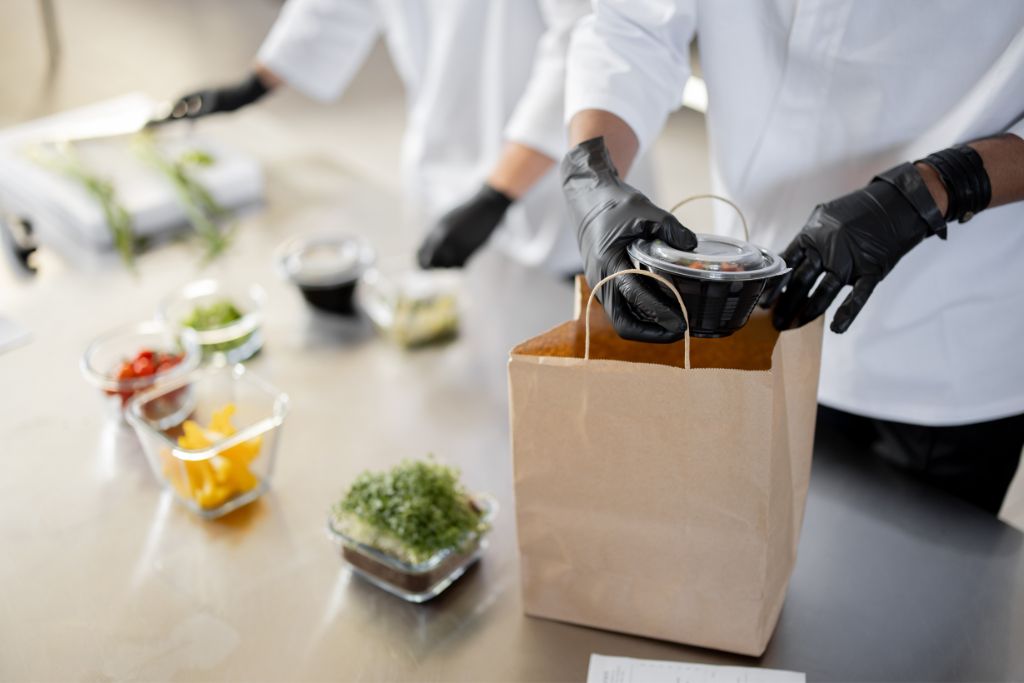
Orden en el caos
Did you know that 73% of restaurant owners report increased revenue after adopting delivery services? Yet many struggle with the accounting complexities these platforms create.
Just about every restaurant is using third-party delivery apps such as GrubHub, Uber Eats, and DoorDash to attract new customers, increase orders, and boost their bottom line. While the increase in revenue is appealing, third-party delivery apps can cause a business owner hassle, headaches and even create sales tax liability if not managed correctly.
The question is: does DoorDash collect sales tax? Does Grubhub remit sales tax? What about Uber sales tax obligations? If you’re trying to make sense of delivery services you’re already using or if you’re considering adding a service, make sure to understand how to set-up these third-party delivery apps to prevent costly mistakes.
Desventajas del servicio de aplicaciones de entrega de terceros
Third-party delivery app services exist outside or independent of the restaurant’s POS system, which presents some challenges for the business owner. First, third-party delivery service orders are received on a separate dedicated device such as a tablet or computer. From the get-go, receiving orders this way creates an inefficient workflow moving orders to the kitchen and increases the potential for delayed or missed orders and unhappy customers.
From an accounting standpoint, third-party delivery apps add additional revenue streams flowing into a merchant’s bank account. The end result? A bookkeeping nightmare. Tracking and reconciling third-party delivery service revenue is time consuming. Many merchants simply do not understand how to enter the correct dollar amount for third-party delivery app sales, which results in sales tax mismanagement. In some cases, a business owner may actually double pay their sales tax without even knowing it.
In other cases, sales tax mismanagement with third-party delivery apps may create an unexpected sales tax liability. Mismanagement of the delivery service orders and incorrectly reporting sales or liabilities can result in fines and penalties that come straight out of the owner’s wallet. State tax auditors are well aware of the challenges associated with managing the third-party delivery service apps and they know exactly where to look in an audit.
Al final del día, las ganancias de las aplicaciones de entrega de terceros son muy escasas. Administrarlos de la manera más eficiente y rentable posible marcará la diferencia entre ganar y perder dinero.
¿La solución? Haga de su POS el registro oficial de todas las ventas
The solution for efficient and accurate third-party delivery service sales is to make these orders flow through the POS system, thus making the POS the official record of ALL sales—dine-in, takeout, and third-party delivery. To make the POS system the official record of sales, third-party delivery app orders should be manually entered into the POS at the moment they are received. While this takes time in the short term, it has huge benefits in the long term. You’ll see a more efficient flow of orders from kitchen to delivery and you’ll spend less time reconciling POS, delivery service revenue, and bank records. Consistently ensuring that all sales flow through your POS is also a best business practice that will increase efficiency, make happier customers and create clean accurate records that will save valuable time and money.
Setting Up Your POS for Third-Party Delivery App Sales:
Setting up a POS to manage third-party delivery service orders is relatively easy but varies slightly from POS to POS. You may need to consult your POS provider for more specific details on how to execute each step.
- Create a new “ORDER TYPE” (ex. Dine-in, delivery) and name it for each APP (Grubhub, DoorDash, Uber Eats) This is usually done in the set-up function, consult POS instructions.
- Create a new “TENDER TYPE” for each APP and name it for each APP (Grubhub, DoorDash, Uber Eats) This is usually done in the set-up function, consult POS instructions.
- Ingrese los pedidos de APLICACIÓN en POS bajo el TIPO DE PEDIDO para esa aplicación y ciérrelos usando el TIPO DE PROPUESTA asociado con la aplicación. Esto registrará la venta de cada pedido de APP en el POS, lo que convierte al POS en el Registro oficial de TODAS las ventas.
- Si está utilizando el impuesto sobre las ventas de DAVO para administrar su impuesto sobre las ventas, DAVO utilizará los datos de ventas de POS para establecer su impuesto sobre las ventas a diario y luego archivar y pagar cuando sea debido. No tienes que hacer nada.
- If you are doing your own sales tax management, when it is time to file and pay your sales tax, it is now part of the sales tax report in your POS. There is no need to go to APP dashboards and hunt for the information. It is nice and neatly recorded in your POS records.
Understanding DoorDash Sales Tax vs. Uber Sales Tax: Who Is Liable?
It’s important to understand which party — the restaurant or the delivery service — is responsible for remitting sales tax to the state. The answer to “does DoorDash collect sales tax?” or “does Grubhub remit sales tax?” depends on the state and the service. This detail is what confuses owners and is exactly where a sales tax auditor is going to look to make sure the State is not being short changed on sales tax. It’s best to consult your contract with the delivery service or consult our chart of third-party delivery service app sales tax remittance by state.
Pagos e impuestos sobre las ventas cuando el restaurante es responsable
If the restaurant is liable for remitting sales tax to the State, the delivery service app will collect sales tax on their orders from the customer and then include it to the restaurant as part of their bank deposit. It is the restaurant’s responsibility to remit the total amount of sales tax collected by the delivery service to the State as part of their sales tax return. So, how much sales tax is the restaurant responsible to remit on the third-party delivery service sales? All of it!!!
Let’s say the third-party delivery service order is $100 with a tax rate of 7%, for a total of $107 collected from the customer. The delivery service takes their fee of 30% for the order (before sales tax). In this example, that fee would be a $30 fee, leaving the restaurant $70. The delivery service remits the $70 plus the $7 of sales tax they collected, totaling $77.
This is where the auditor asks “Did the restaurant pay sales tax on the correct amount?” The restaurant is responsible for sales tax on the total sale, not the net amount from the third-party delivery service. If the restaurant is only just entering the net sales amount from the delivery service order, $77, the result will be underpaying sales tax. This underpayment exposes the business to potential fines and penalties. Following the steps above and entering orders into the POS so that the POS is the one source of all sales is the best way to ensure the correct amount of sales tax is collected, accounted for and remitted to the State.
Pagos e impuestos sobre las ventas cuando el servicio de entrega de terceros es responsable
If the third-party delivery service is liable to remit sales tax to the State (which is increasingly common with Uber sales tax policies and DoorDash sales tax collection), you may be overpaying sales tax if your POS is not set up correctly. In these cases, it’s important to still enter third-party delivery sales into the POS, but remove sales tax from each sale by making it a non-taxable sale and recording it as such on the sales tax return. Many restaurants fail to do this and double pay sales tax.
Si ha estado pagando dos veces el impuesto sobre las ventas en las ventas del servicio de entrega de terceros, es posible que tenga derecho a un reembolso. Consulte a su asesor financiero o al Departamento de Ingresos del Estado sobre cómo presentar una declaración enmendada.
One last bit of nuance is to check whether delivery charges are taxable or non-taxable in your jurisdiction. If they are taxable, be sure to assign them a tax rate, if not, make them non-taxable. Keep in mind you can also deduct the third-party delivery service fees as a marketing expense on your tax return.
Simplify Third-Party Delivery Sales Tax with DAVO
It behooves every restaurant owner to make sure they manage revenue from third-party delivery service apps correctly and efficiently to gain the maximum ROI and avoid wasting valuable resources. With the complexity of understanding whether Uber Eats, DoorDash or Grubhub handles sales tax collection in your jurisdiction, many restaurant owners are turning to automated solutions.
DAVO Sales Tax automation integrates with your POS system to automatically set aside the correct amount of sales tax daily, whether it comes from dine-in, takeout, or any third-party delivery platform. When your filing deadline approaches, DAVO files and pays your sales tax automatically, giving you peace of mind and allowing you to focus on what matters most—running your restaurant.
Contacte con DAVO hoy to learn how we can help you navigate the complexities of Uber sales tax, DoorDash sales tax, and other delivery platforms with confidence.
